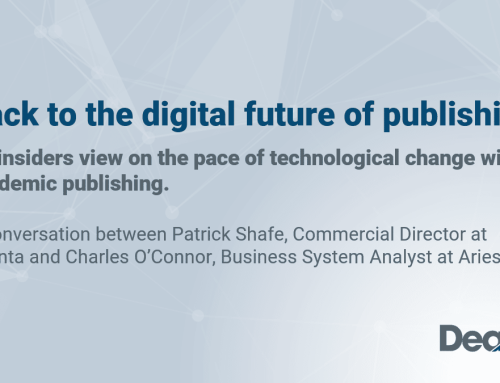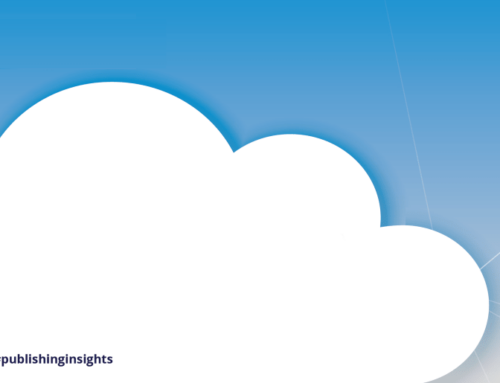Publishing production processes have undergone a revolution in the Digital Age – but the question of profitability has never been satisfactorily answered.
In this blog, we’ll discuss:
- Pre-publication processes made possible by digital developments; offshoring technology, outsourcing editorial
- Profitability in highly competitive trade and academic publishing markets
It’s no longer necessary to be physically present in the publishing environment – and this is good news if you’re trying to maximise efficiencies and compete in a highly competitive market.
Some organisations are considering a subtle combination of offshoring (exporting processes, particularly technology, to other global economies) and outsourcing (allotting certain job functions, particularly editorial functions, to an outside organisation).
A whole industry was created on the back of outsourcing publishing production and mainly centered in hubs in India.
Darren Ryan, CEO Deanta
As an aside, if you’re interested in how global cultural differences impacts on your decision to offshoring publishing projects, we wrote about this recently. Click here to read our Global Culture article and watch the accompanying video.
Most traditional presses already have harnessed digital technologies for back-end book production, enabling shorter print runs, better inventory control, and print-on-demand. These new production processes support changes in publishing – from cost reduction to better availability – but do not alter the nature of the products themselves.
However, it’s impossible to have a conversation about pre-publication processes and maximising efficiencies without first exploring how information is being consumed amongst readerships. Both are part of the same story, and we’ll look specifically at academic publishing in this blog. Digital technology has changed how scholarship is created, disseminated, and consumed, and these advances are beginning to have a transformational impact on publishing models.
What’s really having a huge impact now on the overall industry is that technical outsourcing, which was based on a business process outsourcing concept, is all but over due to the evolution of technology.
Darren Ryan, CEO Deanta
Making a buck from digital books and products
With digital publishing, the processes involved from bringing a first draft to final output is the same, the only difference is how they are being bought and consumed.
The publishing function has become more complex with the rapid evolution of digital and networking technologies – and making a buck from these digital products is still a huge concern for both trade and academic publishers. This is further problematised when research shows that not all learners are ready to make the jump into exclusively electronic learning materials; therefore, publishers and presses must hedge their bets, offering information in a wide variety of formats.
CASE STUDY: Daytona State College
In preparation for campus-wide electronic text adoption, Daytona State College completed a two-year comparative study of four textbook distribution models: print purchase, print rental, eText rental, and eText rental with eReader device.
They found that, while faculty and administrators may embrace electronic texts, students often prefer to rent printed textbooks. Therefore institutions seeking to implement campus-wide electronic text adoption should be prepared to address specific concerns, including faculty choice, infrastructure needs, student technological skills, cost savings, and instructional adaptation.
Academic institutions that want to encourage wider adoption of knowledge and information through electronic formats need to offer this information in traditional formats, as well.
While most big academic publishers have been selling electronic journals to institutions via online platforms for many years, IT changes and adapting formats are not as straightforward as could be assumed. Format changes are time consuming and expensive, propelling publishers to offshore many pre-publication processes, including editorial.
Additionally, the emergence of ‘grey literature’ – research and information that is published outside the commonly recognised channels – pose a formidable challenge to scholarly publishing and revenue generation.
As scholars increasingly rely on these channels to share and find information, the boundaries between formal and informal publication will blur. This hoists a huge question mark over the future profitability of publishing, one that institutions haven’t addressed.
Institutions must continue to offer information in traditional formats to aid the transition to more widespread adoption of electronic formats. This has an impact on the bookselling market. Since the appetite for physical books is still strong, sometimes students are better off purchasing books and reselling them on the used book market to recoup some of the costs. Some services, like OverDrive, offer the ability for public institutions and universities to borrow digital content from anywhere – this is one example of how they are beginning to build digital library collections.
Trade publishers, too, have grappled with important questions around the pricing of digital products, and they doubt the industry will be able to retain control over pricing and content.
Recent drives to reduce tax on eBooks have been greeted with enthusiasm by book publishers, giving them leave to experiment with pricing structures and policies around digital products that will protect their bottom line.
Outsourcing publishing functions
While publishing has never been a high-margin business, profitability has not been cause for existential panic until recently. Pre-internet, book publishers had things good. They controlled content, distribution, and manufacturing – and charged for it all.
Nowadays, it’s harder to identify the book publisher’s competitive advantage in an era of self-publishing and grey literature, and where the expectation is that information should be free or low cost.
However, as before in the manufacturing process, book publishers can protect profitability by reducing costs and improving efficiencies. Publishers are now outsourcing elements of their pre-publication process – both technological and editorial. Publishing functions can be outsourced to third-parties either onshore or offshore, taking advantage of global economies, global talent, the cloud and automation.
Offshore
Offshoring important technology processes opens up a whole new world of unknowns that have to be navigated, often at a geographical distance. The fact is, no one cares where the data farms and servers are located that digital publishing relies on – what matters most is that the cost of production, maintenance, and storage is cheap, so that efficiencies and quality service can be maximised.
Onshore
While certain technology functions can be offshored, the need for greater client intimacy is influencing a move to bring certain types of outsourced work, particularly editorial development, back onshore, for native English speakers to manage. It’s a booming business. Currently, in terms of outsourcing, content or premedia services are the largest service category, comprising about 70% of the total revenue, followed by design services, with about 15% of the total revenue.
Unsure?
Getting quality offshore and onshore services at competitive prices remains a priority for publishers – and the solution is closer than you think. Deanta can help. We would love to expand on our thoughts on the future of academic publishing, how you can generate more revenue, and how to drive more interest and awareness around your next publication.












